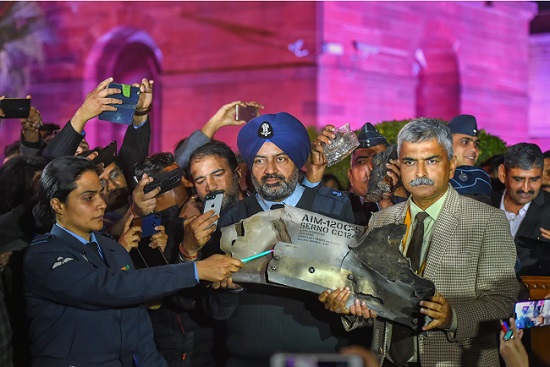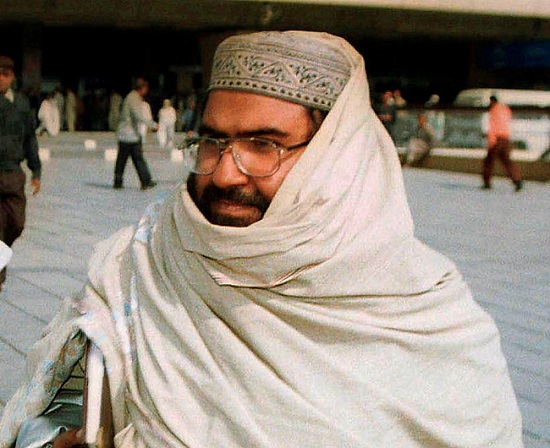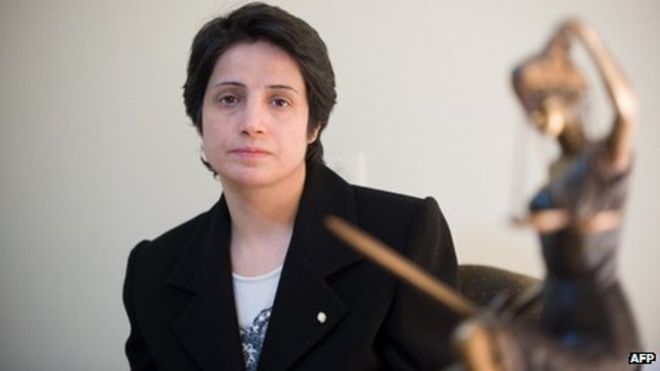Islamabad has now officially accepted that its fighter jets had violated Indian airspace on February 27 in retaliation to the airstrikes carried out by Indian Air Force (IAF) the previous night. Yet, it has vehemently denied New Delhi’s claim that during this incursion an IAF MIG 21 fighter aircraft piloted by Wg Cdr Abhinandan Varthaman had shot down an F-16 fighter jet of Pakistan Air Force (PAF).
But this denial isn’t at all surprising because Pakistan has historically been very economical with the truth. Remember how just two months after its creation, Pakistan claimed that the invasion of Kashmir was the handiwork of tribals and its army was not involved in any way even as foreign journalists were reporting of how Pakistan army was actively participating in this action. Similarly, in 1965 and during the 1999 Kargil crisis it once again claimed that those who had intruded into Kashmir weren’t army personnel but ‘razakars’ (volunteers) and Kashmiri ‘mujahideen’ (holy warriors) respectively.
It is therefore but natural for the global community to take whatever Islamabad says with much more than just a pinch of salt. That’s why when Prime Minister Imran Khan promised to present the world with a “Naya (new) Pakistan” and followed it up with the announcement last week that “..this government will not allow Pakistan’s land to be used for any kind of outside terrorism,” the international community wasn’t impressed. After all, didn’t President Pervez Musharraf make a strikingly similar reassurance to Indian Prime Minister Atal Bihari Vajpayee in 2002 that he will “not permit any territory under Pakistan’s control to be used to support terrorism in any manner”?
So let’s pragmatically try solving the mystery of whether or not an F-16 of PAF was shot down last month. As per Indian claims, a MIG 21 Bison fighter shot down one F-16 of PAF over Pakistan occupied Kashmir (PoK) airspace and two parachutes were seen descending which confirms that the pilots had abandoned the crippled aircraft and ejected. New Delhi also conceded that in this encounter the IAF had lost one MIG 21 Bison fighter aircraft and its pilot Wg Cdr Abhinandan Varthaman who bailed out had landed in PoK was taken into custody by Pakistan army. It however refuted Pakistan’s claim of a second IAF fighter aircraft being downed and that two pilots were missing.
Islamabad’s version was entirely different. Director General (DG) of Inter Services Public Relations (ISPR) Maj Gen Asif Ghafoor tweeted that during this aerial combat the PAF had shot down two Indian fighter jets out of which one had crashed in PoK whereas the other aircraft fell in Kashmir. He also confirmed that while one IAF pilot was in its custody, two others were “in the area.” An hour later, while parading Wg Cdr Abhinandan before the media Maj Gen Ghafoor said that the Pakistan Army had apprehended the second IAF pilot who was being treated for his injuries in a Combined Military Hospital (CMH). Maj Gen Ghafoor out rightly rejected India’s claim of the IAF shooting down an F-16 saying that the PAF didn’t use F-16 fighters in this action.
Since the DG ISPR had initially spoken about two IAF pilots being “in the area,” many assumed that one of them had been subsequently apprehended and since Maj Gen Ghafoor specifically mentioned that this pilot was being treated at a CMH, there was no reason to doubt the veracity of his claim. However, by the evening DG ISPR made the unbelievingly embarrassing revelation that “…there is only one (IAF) pilot under Pakistan Army’s custody.” While one can understand that one IAF pilot who was reportedly “in the area” but had not been apprehended may have been able to evade the Pakistan Army and reach Indian lines safely, but how did the injured pilot being treated in CMH suddenly vanish into thin air? It’s inconceivable that the Pakistan Army, which boasts unmatchable professionalism, could go so badly wrong while making claims and in the bargain commit such a humungous faux pas!
Though there may be a wide variation in the Indian and Pakistani versions of the February 27 air duel, but there are certain similarities and these give us pretty good clues about what actually would have happened that day. The first issue is regarding the number of pilots who bailed out; the DG ISPR claim that three IAF pilots did, (one who was in their custody, the second who was admitted in hospital but inexplicably ‘disappeared’ and the third who was never apprehended and possibly was ‘the one who got away’). On the other hand India maintains that while two of those who bailed out were PAF pilots of the downed F-16 jet, the third was the MIG 21 pilot (Wg Cdr Abhinandan) of IAF who had shot down the F-16.
The common factor in both these versions is that three pilots had ejected on that day and landed in PoK. However, since the IAF hasn’t notified that two of its pilots are missing and Pakistan denies that any of its fighter jet was shot down, the question is: Who and where are these pilots? There can be only two possibilities — one, they are IAF pilots of the second fighter which Pakistan claims to have downed that day, or two, these are the pilots of the downed F-16 as India asserts. If it’s the former, then it seems that just like the Pakistan Army which disowned its dead during the Kargil War, India too has decided to simply abandon its downed pilots and left them to their fate. In case this deduction sounds implausible, and so the only possibility is that these two pilots belonged to the PAF.
So was Maj Gen Ghafoor outrightly lying when he claimed that one IAF pilot was being treated in an army hospital? Even though I have no soft corner for Maj Gen Ghafoor or his ilk, but I still refuse to believe that a General of the Pakistan Army would intentionally commit such a mammoth blunder. My personal estimation is that DG ISPR was merely an unfortunate victim of his subordinates’ overzealousness and his own exuberance which made him to accept inputs without confirming the same. Therefore, since both sides agree that three pilots ejected that day, there is no need for anyone to doubt this figure and this reinforces reports of how mistaken identity led to a downed PAF pilot being so badly beaten up by locals that he was hospitalised in an unconscious condition.
So in all probability Maj Gen Ghafoor wasn’t lying when he claimed that one pilot had been hospitalised. The only mistake he made was to presume that the unconscious PAF pilot who was found in an unconscious state and semi naked condition as his flying suit had been ripped apart by the mob who lynched him belonged to IAF! Maj Gen Ghafoor’s ‘josh’ seems to have overwhelmed his ‘hosh’!
The next issue concerns about the participation of F-16s in this action. Pakistan has categorically denied this but remnants of an AIM-120 C-5 AMRAAM missile recovered from the area with clear markings casts serious doubts on Islamabad’s claim because this sophisticated armament can only be fired from an F-16. Some armchair detectives and computer geeks in Pakistan searched the internet and ‘discovered’ that the serial number on the missile fragment displayed by IAF matched that of a missile supplied by its makers to Taiwan. But since Taiwan has denied this and internet data lacks authenticity, Pakistan’s claim of not employing F-16 against India on February 27 remains questionable. Only Washington that supplied F-16s and AMRAAM missiles to Pakistan or its manufacturer Lockheed Martin can conclusively unravel this mystery, but this isn’t likely.

Though Washington has announced that “We’ve seen those reports (on use of AMRAAM missile by Pakistan) and we’re following that issue very closely,” it is unlikely to pursue this issue for two main reasons. One, it doesn’t want to rake up a controversy by inviting international and domestic attention to Washington’s incurable habit of selling state-of-the-art armament to nations with a tainted history of honouring ‘end-user’ agreements. In the 1950s, Washington supplied Pakistan with M48 Patton tanks, F-86 Sabre jets and F-104 Star-fighters on the condition that these would not be used against India.
But Islamabad embarrassed Washington by fielding these against India during the Indo-Pak war of 1965. This same thing happened in the 1980s when the Pakistan Army diverted a large number of the lethal Stinger surface-to-air portable missiles supplied to it by CIA for equipping ‘mujahideen’ fighting the Soviets in Afghanistan. Recovery of Stinger missile casings from positions abandoned by retreating Pakistan Army personnel in Kargil proves that this missile was used against the IAF during the Kargil conflict.
Also, Lockheed Martin that produces F-16 aircraft and its variants as well as several other state-of-the-art weapon systems and defence equipment are the world’s biggest defence contractors and exercises considerable influence over Washington. Since the F-16 which is being used by several countries has the unique distinction of never having been shot down in aerial combat, this achievement gives Lockheed Martin the competitive edge in the arms market. As such, it would never like to concede that the enviable record of the F-16s’ invincibility has been shattered by an antiquated and ungainly MIG 21 armed with a ‘not so smart’ short range missile!
US State Department Deputy Spokesperson Robert Palladino has already clarified that “as a matter of policy, we don’t publicly comment on the contents of bilateral agreements that we have in this regard involving US defence technologies nor the communications that we have with other countries about that.” Therefore, it would be unwise to expect either Washington or Lockheed Martin to clear the air on whether Pakistan had pitted F-16s against the IAF on February 27. So, New Delhi has no choice but to work alone for exposing Islamabad’s deceit and doublespeak. But with DG ISPR bungling up on a simple thing like accounting for the number of IAF pilots taken into custody by Pakistan Army, this shouldn’t be a very difficult task.










